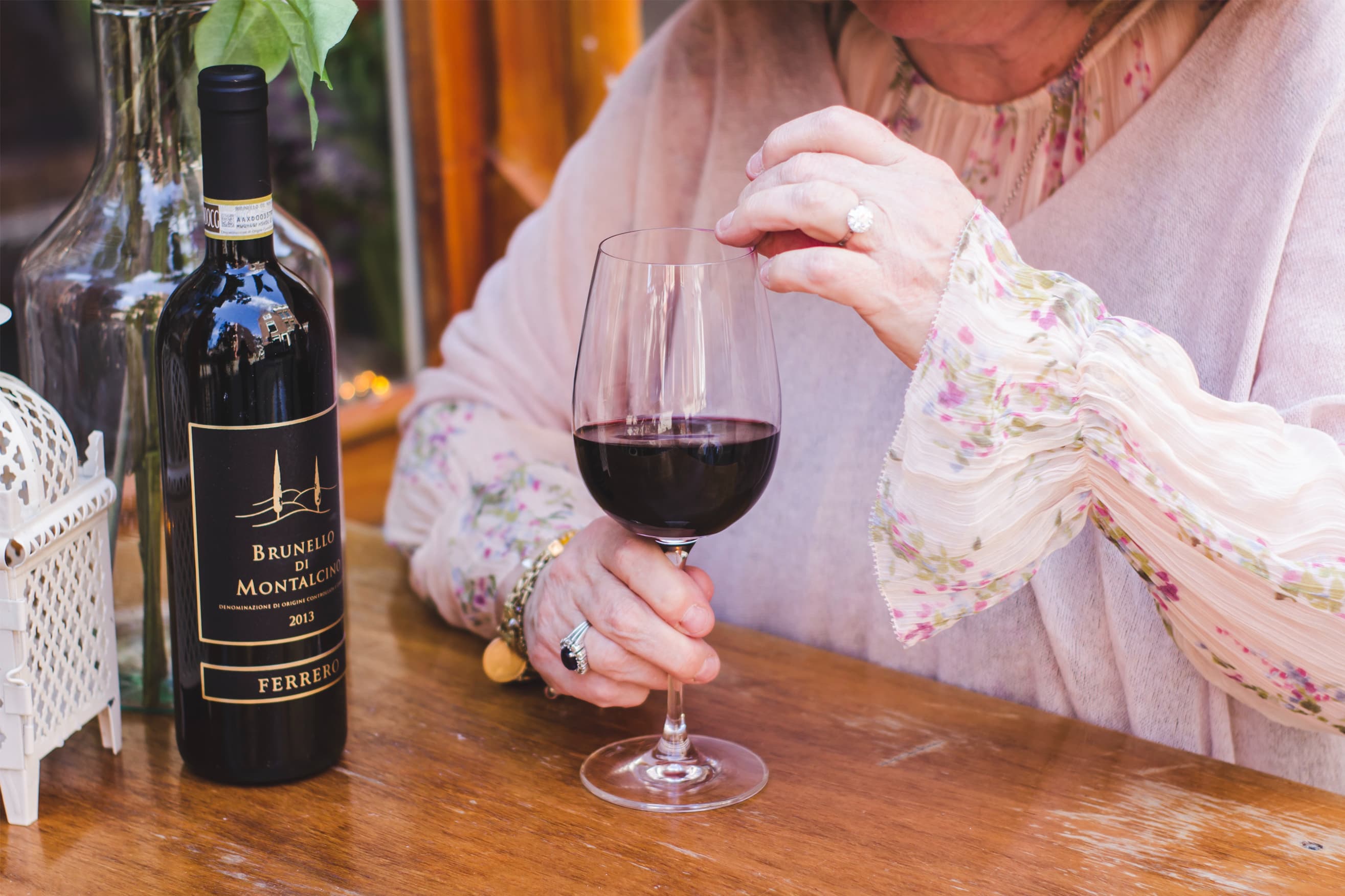
After a long day of work, many Americans will often go home and look forward to changing into a set of comfortable clothes and enjoying their dinner after which, they will most likely partake in sipping on one or two glasses of wine before calling it a day. And, as any self-respecting wine connoisseurs will tell you, there is an appropriate wine for every occasion. And of course, there is always a certain way to serve and store wine. Be it short-term or long-term.
Different Types of Wine
Wine is made by the fermentation of grapes through the addition of yeast to a juice of crushed grapes. This can be with the skin of the grapes or without it depending on the kind of wine being made. Red wine would have a high or moderate content of tannins compared to white wines. These tannins are the compounds which, form the bitter after taste in a majority of red wines, and also act as a preservative that, allows red wine to age for longer than white wine.
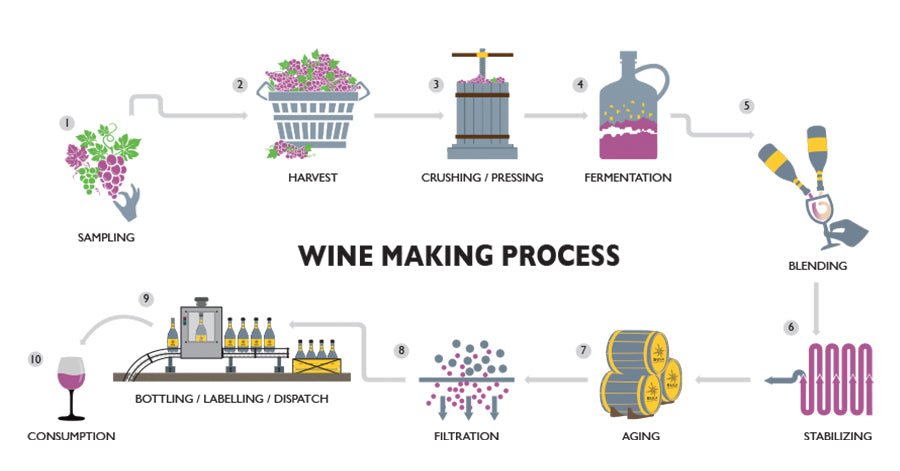
Of course, there aren’t just red and white. Red wine alone has 6 different types that are; Bordeaux, Chianti, Rioja, Syrah, Primitivo, and Beaujolais. These are all made from red grapes but of different breeds and are sometimes created from blends of two different types of grapes. Then there are the white wines; these are made by fermenting white grapes which are green in color. Notably, white wines are made with the skins of the grapes removed before the juice is fermented. This type of wine lacks tannins and is less capable of aging than red wines. White wines can generally be put into one of the four sub-categories; Pinot Grigio, Sauvignon Blanc, Riesling, and Chardonnay.

Another type of wine is one of the lighter and sweeter flavors in the world of wine tasting, Rosé. This wine is blush or pinkish in appearance and contains a very low amount of tannins. To make this wine, black grapes (also known as red grapes) are fermented with the skins for a very brief time which gives it that pinkish color. Once the desired color is achieved, the skins are removed and the wine is allowed to ferment for a little longer. Rosé can be found in several flavors that are coincident with those of red and white wines as well.
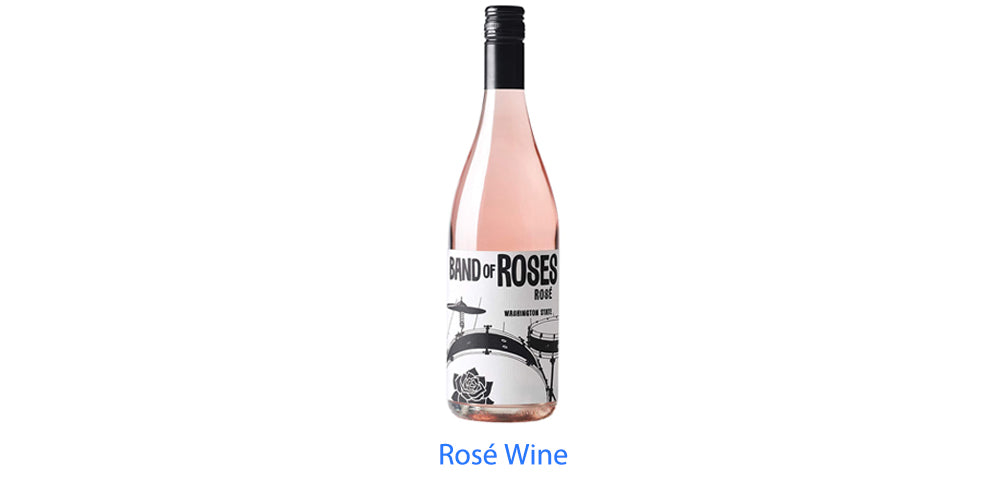
The next kind of wine is sparkling wine. This wine can be made from both white and black (or red) grapes. This wine can be white, red, or rosé in color and can be made from a single kind of grape or multiple blends of grapes. Sugar content is also a controllable factor in the flavor of these wines. As these wines are highly acidic, sugar is often added to them to create balance in the taste. There are two basic types of sparkling wines that are widely known throughout the industry; champagne and prosecco.
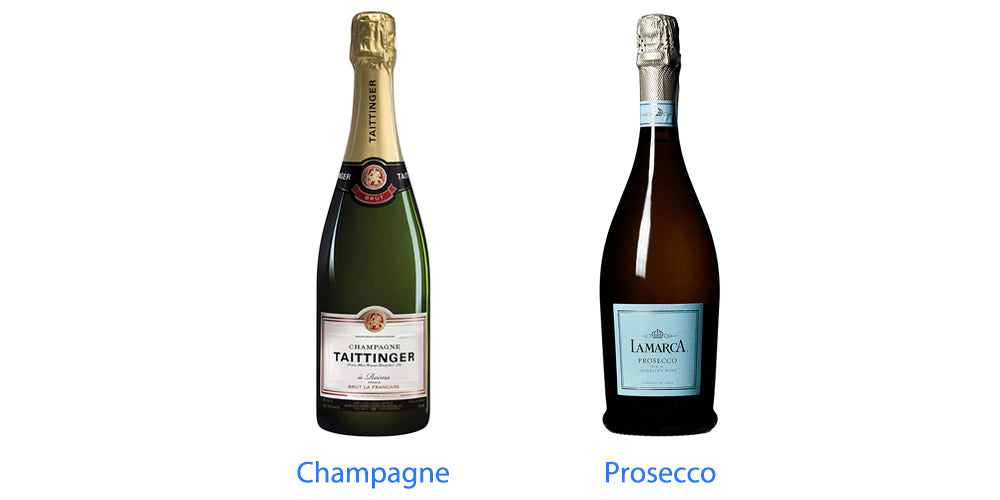
The final type of wine is known as a fortified wine and is created in a manner slightly different than that of regular wine. After fermenting a solution of grape juice either completely or partially, it is introduced to a distilled spirit made of either the same or a different kind of grape. Often these wines will be sweet enough that they can be interchanged with dessert wines if the alcohol content is low enough.
Storage Methods Before the Invention of Refrigerators
Long before the invention of corks, screwcaps, and even wine bottles themselves people have been consuming wine since the time of the ancient Greeks. At times, their wine was diluted using water due to the syrupy thickness of the heavenly drink. Traditionally, these drinks were stored in goatskins and aged in open vats covered with rags soaked in grease. This meant that most wines in ancient greek times were given constant exposure to air, this made the wine spoil very easily and in a very small amount of time.
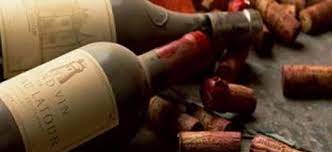
In 1500 BC, the Greeks traveled to Rome and carried their love of wine with them. This love for winemaking was accepted with open arms as the Romans began introducing their ideas and innovations into this process by the introduction of the pruning knife and one major innovation was the introduction of glass bottles that were used to store wine and to aid in the aging process which made the wine more refined than anything the greeks could have imagined at the time. Eventually, the innovations of the modern world had caught up with viniculture and introduced cooled storage methods such as that of the refrigerator which, although kept the wine cool was bringing effects that were later discovered.
Effects of High Temperatures, Temperature Fluctuations, Humidity, and Light On The Aging and Quality of Wine
Many newcomers to the world of wine will often think that wine is like any other beverage and will be stored in the same way. Nothing could be further from the truth. It isn’t merely about putting a bottle in the fridge, wine requires proper care and protection from the elements that have helped create it. One of the first sins that a wine connoisseur will never commit is to keep their wine in an area where the temperature is above 70 degrees Fahrenheit and here’s why;
Normally, the wine that is found in stores travels in uncooled trucks and is exposed to such temperatures that the aging process will have been sped up already, this is because high temperatures will increase the speed of chemical processes that are occurring constantly in the bottle due to the influence of the organic compounds that all wine contain. By storing a wine bottle at relatively high temperatures, a consumer would accelerate the aging process further making the wine pass by its peak age and would affect both the quality and taste of the wine.
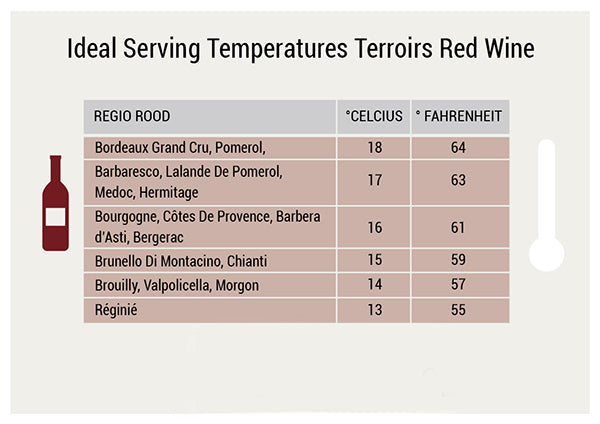
Another factor to consider is the number of changes that a wine bottle goes through when being stored and served repeatedly. As we’re sure most of our readers would prefer not to finish the entire bottle in a single night, it will often go from storage to an open state and back multiple times. It is important to limit the number of times a bottle goes through these temperature changes as the repeated expansion and contraction of the wine inside the bottle would cause several dominoes to fall. The first being the seepage of aromatic air from within the bottle to the outside atmosphere and the second being the inflow of normal air into the bottle. This seepage would be passing through the cork and could also lead to the growth of mold before the bottle can even be opened for the first time. Now imagine if that happened to a perfect bottle that you had just bought from the store six months ago but never had the chance to open.
Even extremely low temperatures can cause problems, as it will slow down the aging process at such an exponential rate that the wine would begin to spoil. Another added effect of low temperatures will be the decreased humidity that can potentially dry out the cork and lead to unwanted oxidation of the wine. Furthermore, there is another added risk of damage to the wine which can happen in the event of direct exposure to sunlight. That is; ultraviolet light or light from normal household lighting can lead to dreadful conditions for the organic compounds present in the wine bottle and would result in negative externalities to the flavor, color, and consistency of the wine. And one question that we have left unanswered is why shouldn’t you just chuck the wine bottle into the fridge?
Effects of Keeping Wine in the Fridge for Long Term
We’ve already discussed the factors that affect the quality and aging of wine; the temperature, the humidity, the light, and one thing we haven’t mentioned so far is the importance of vibration on the aging of your favorite wine. Although most wines are ready to drink right off the shelf and have room to age, there are external influences that you will have to watch out for if you plan on enjoying the complete bottle with not even a single drop spoiled.
And even though a regular refrigerator is capable of storing and cooling wine to just the right temperature if you’re about to serve it in a few hours or maybe even a few days… A refrigerator is simply not capable of preserving the flavor, color, and consistency of a fine-bodied wine for longer than a week. But why is this so?
Well, there are a few reasons for this; Firstly, a regular refrigerator is designed to rapidly cool the atmosphere inside it and to remove the humidity as much as it can, simply because a lot of the food that is placed in a fridge will require those conditions. And while a normal fridge is capable of cooling its insides down to around forty degrees Fahrenheit, those conditions are simply not optimal for a bottle of wine that is sitting in there for seven days of dry, extremely cold conditions.
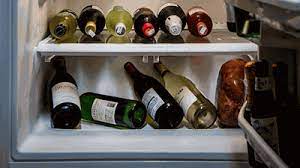
Secondly, there is also a light in the fridge that shines brightly onto the bottle every time you open the fridge for a quick snack or even just to check what you can eat. And finally, the number of vibrations that constantly reverberate throughout a fridge in a day is enough to bring a majority of the tannins and the flavor of oak used to age the wine out into the forefront of the profile of any wine, consequently aging the wine at best and spoiling it completely at worst. And what could make this consequence more likely is the storage of a wine bottle in an upright position in the door of the fridge, which would constantly move and would prevent the cork from being in contact with the winemaking the cork dry out causing an increase in ullage levels? The ullage level is the amount of space between the cork and the wine which should be kept at a range of 3-10 mm.
How to Store Wine in a Regular Home for Long Term
At this point, the establishment of the fact that wine bottles cannot be stored in a regular fridge or at room temperature now begs the question of what the adequate conditions and appliances for long-term wine storage are? And there is a very simple answer to that, which any wine connoisseur will know, is; a wine cooler. Agreeably, a wine cellar would be the most adequate method to store wine if you are a collector with more than a hundred bottles, but sometimes it’s just a matter of 5 to 10 bottles of a respectable wine. And in that situation, a wine cooler would bring you the highest amount of advantages even compared to an underground cave that serves as your wine cellar.
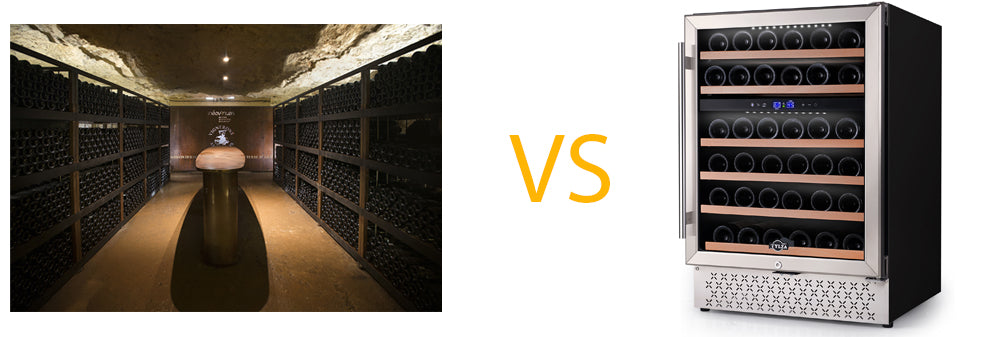
But what makes your wine cooler such an efficient and effective method to store wine? The fact that it was designed with that specific purpose in mind. A wine cooler is built with the storage requirements of all kinds of wine in mind. With an average temperature of 50 to 70 degrees Fahrenheit that is induced slowly unlike regular refrigerators, and the capability to maintain the perfect level of humidity to help keep the corks perfectly moist, there simply isn’t a better option for small-scale storage of wine.
What’s more, a wine cooler will often come equipped with dual-zone climate control and a digital thermostat so that you can keep various types of wine safely stored in their optimal climates. This could allow you to keep a wide collection of wine for every occasion and would allow you to keep your wine separated from any food items and their odors which would spoil the wine if kept in a normal fridge. And, to protect your wine from harmful UV rays, there are white LED lights installed in almost every wine cooler out there which prevent the aging or spoiling of wine.
Of course, there are other amenities that you can avail of through a wine cooler as well. The extra storage space alone is a benefit, but to be able to choose where you place the wine cooler is a blessing in disguise. For anyone that has regular wine-tasting parties or parties that even involve wine being heavily used, it would be very easy to have the wine cooler installed in their bedroom, living room, or even an office if your clients require a little relaxation during important meetings. The double-paned windows allow for complete insulation of your wine from the outside world helping maintain a constant temperature which will extend the shelf life of your wine significantly. And if you’re worried about the noise that fridges usually make when operating, you should worry no more as these coolers are designed with vibration absorption systems that protect your wine allowing it to mature at its natural speed and keep the surroundings as serene as possible.
Choosing the Ideal Wine Cooler
But, buying a wine cooler isn’t as simple as going out and getting a bottle of fine wine. It is an investment and an electrical appliance that will be using energy in the consumer’s home for the foreseeable future. A wine cooler should have a certain set of characteristics that will provide its user with the highest levels of functionality and safety. So if you’re ever in the market and are looking for an ideal wine cooler, here are a few things you should know;
A wine cooler should be capable of keeping one bottle of wine at 55 degrees Fahrenheit while maintaining the other at 65 degrees Fahrenheit and still be able to maintain the same level of humidity throughout its storage cabin to ensure that neither bottles experience any additional oxidation due to dry corks. And at the same time, the presence of double-paned doors would further help with the insulation of these bottles from the outside world. What’s more, this should be maintained throughout a storage capacity of 20-30 bottles, although it would be important to mention that it is better to allow a slight amount of room to each bottle by maintaining an inventory of an even 25 bottles.
Another key factor that should play an important role in the choice of your wine cooler is the amount of noise and vibration that it emits. Both towards the wine bottles and to its outside surroundings. Notably, no refrigerator will be able to operate at a noise level of zero decibels, but it is possible to keep the decibel level to a minimum of 40-50db which would not wake you if you were to keep the cooler in your room. And, with a front ventilation system that allows you to place the cooler in either a corner or directly in front of a wall, there will be no worry of over-heating the compressor or the thermos-electric cooling system. Speaking of safety, many wine collectors are at the point where their children may be somewhat mischievous, which is why most wine coolers in the market are already secured using a physical locking system that can be opened with a regular key. And of course, all this should be at a competitive price of under $899 which would be worth the guarantee of preserving every drop of wine you put inside it.
Tylza Wine Cooler Refrigerator.
Should Wine be Stored with Such Expensive Equipment?
We’ve discussed the methods used in ancient times, which were albeit inefficient but still got the job done. And today we not only have refrigerators which are also somewhat detrimental, but also wine coolers. You could think of them as a luxurious and unnecessary expense for a fancy bottle of wine, or you could consider them as an investment to potentially preserve thousands of dollars’ worth of exquisite and antique wine. In terms of logical analysis, any wine collector would agree that wine coolers are worth their price but again, beauty is always in the eye of the beholder and the cost is subjective to each buyer. Despite anyone's opinion, technology has advanced for our benefit be it however small.



